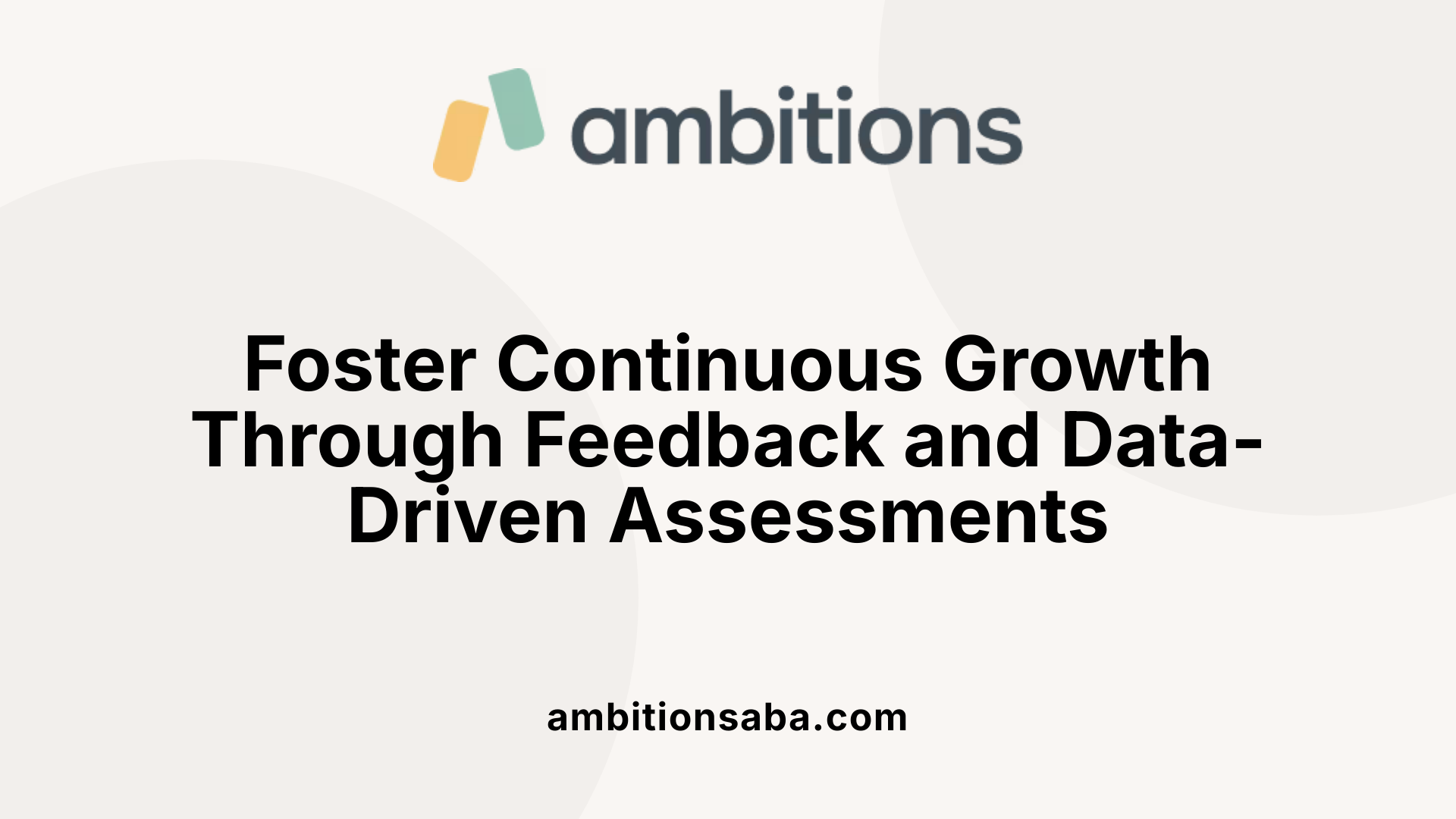Empowering Independence: ABA Therapy and the Development of Essential Self-Help Skills
Unlocking Effective Strategies for Onboarding and Developing ABA Professionals
Training new ABA therapists is a cornerstone of delivering high-quality behavioral interventions. An effective training program not only equips therapists with vital skills but also fosters confidence, adherence to ethical standards, and ongoing professional growth. This article explores comprehensive strategies, from onboarding procedures to supervision practices, that can shape competent, motivated ABA practitioners capable of making meaningful impacts.
Designing Structured, Comprehensive Onboarding Procedures

What should an onboarding procedure for ABA staff include?
An effective onboarding process for ABA therapists covers many important aspects to ensure new staff are well-prepared. Initially, it involves comprehensive training on the organization’s policies, workplace safety, and mandatory courses such as AODA and harassment prevention. These foundational elements help set a professional tone.
It also includes setting up personnel files with necessary licenses, credentials, and background checks, which are crucial for compliance and safety. New hires should receive easily accessible resources like manuals, checklists, and learning tools that outline job duties and expectations.
Practical training is a core part of onboarding. Staff should engage in online modules mixed with shadowing, role-playing, and live feedback sessions. These methods help translate theoretical knowledge into real-world skills. Regular supervision, mentorship, and consistent performance evaluations during the first six months support ongoing learning.
Using digital platforms such as Learning Management Systems streamlines the training process. These tools improve retention, allow progress tracking, and provide a structured framework that fosters confidence and satisfaction.
How can digital tools and technology be utilized in therapist training?
Technology plays a transformative role in ABA therapist training. E-learning modules and video demonstrations make training flexible and accessible. Virtual reality scenarios and video modeling help therapists practice skills in controlled, safe environments.
Data collection software, smartphones, and wearables facilitate precise tracking of client progress and skill mastery. Telehealth platforms give therapists experience delivering remote services, broadening their expertise and practice scope.
Moreover, AI-driven applications support ongoing professional development, making learning engaging and tailored. These digital tools not only raise the quality of training but also ensure therapists stay current with evolving practices, ultimately leading to better client outcomes.
Implementing Evidence-Based Training Frameworks and Curricula
 Training new ABA therapists effectively requires a structured approach grounded in evidence-based methodologies. A central component is Behavioral Skills Training (BST), which combines instruction, modeling, rehearsal, and feedback. This method promotes active learning and skill mastery, especially useful for complex skills or diverse client needs.
Training new ABA therapists effectively requires a structured approach grounded in evidence-based methodologies. A central component is Behavioral Skills Training (BST), which combines instruction, modeling, rehearsal, and feedback. This method promotes active learning and skill mastery, especially useful for complex skills or diverse client needs.
BST stands out compared to traditional lecture-based training by engaging staff in hands-on practice, leading to better retention and generalization of skills. It’s particularly efficient when scaled through pyramidal training, allowing large groups of staff to be trained systematically. This systematic approach ensures that everyone develops proficiency while maintaining high standards of care.
In addition to BST, utilizing structured curricula with pre- and post-tests helps ensure consistency and comprehensiveness. These curricula typically cover core principles of ABA such as positive reinforcement, task analysis, and the ABC model. Regular assessments through tests and performance evaluations allow trainers to monitor progress and identify areas for improvement.
Effective ABA training programs incorporate multiple instructional strategies. These include real-life role plays, video demonstrations, and supervised fieldwork, providing learners with practical experiences. Ongoing supervision and mentorship are critical for translating classroom learning into effective practice, including case reviews and peer support.
Technology plays a vital role in modern training frameworks. Digital tools such as online modules, virtual reality simulations, and data collection software enhance engagement and learning outcomes. Incorporating these tools makes training accessible and allows for real-time feedback and progress tracking.
Developing an effective curriculum also involves beginning with the interview process, where role-playing scenarios and direct client interactions help assess candidate suitability. During initial training, support staff learn the organization’s culture and understand when to seek help. Applying the BST method over one to two weeks, starting with observation, modeling, and gradually increasing responsibility, promotes skill acquisition.
Continuous professional development is necessary to keep ABA staff competent. Regular training sessions, including workshops, lunch and learns, and watching training videos with assessments, help reinforce skills and introduce new evidence-based practices. Providing succinct, accessible written descriptions of skills ensures staff can easily reference key concepts.
In summary, combining behavioral skills training, structured curricula, mastery of core ABA principles, and ongoing supervision creates a robust foundation for effective staff training. Leveraging technology and ensuring continual education fosters a highly competent workforce dedicated to delivering quality care.
Supervision, Evaluation, and Ongoing Professional Development

What are best practices for supervision and oversight in ABA therapist training?
Effective supervision in ABA involves clear communication, structured oversight, and continuous support. Supervisors should create explicit expectations via detailed contracts, which are reviewed regularly by trainees. Developing supervision plans aligned with BACB standards ensures consistency and quality.
Regular direct observations and skill assessments form the backbone of performance reviews. Systematic documentation helps track progress and identify areas needing improvement. Ongoing, constructive feedback fosters a culture of open communication, allowing supervisees to learn from their experiences and refine their skills.
Embedding ethics and professional growth into supervision is essential. Discussing real-world ethical dilemmas and cases enhances decision-making skills. Maintaining positive supervisory relationships and supporting career development after certification also improve overall effectiveness.
Supervisors should continually evaluate their practices, adapting to new challenges and evolving standards to ensure high-quality supervision.
How can performance in ABA therapy be effectively measured and evaluated?
Assessment of therapist performance combines direct observation with data analysis. Supervisors shadow sessions to evaluate how well intervention protocols are implemented, using fidelity checklists to ensure adherence.
Monitoring client progress through systematic assessments highlights treatment effectiveness and guides adjustments. Data accuracy and consistency are also key performance indicators, reflecting a therapist’s proficiency in data collection.
Regular progress reviews and collaborative supervision foster accountability and continued learning. This approach enables early identification of deficiencies and supports ongoing professional growth.
What strategies support ongoing education for ABA professionals?
Continuous education keeps ABA therapists current with the latest research and techniques. Organizations can facilitate this through on-demand online courses, workshops, and conferences meeting certification requirements.
Peer support systems such as supervision and consultation enhance practical skills and knowledge sharing. Leveraging professional resources like webinars, blogs, and toolkits provides accessible updates.
Specialized training programs like Rethinked and TOTAL expand capabilities in working with children with autism. Models like HQS help build district-wide support capacity, ensuring scalable and sustainable professional development.
Use of digital platforms for continued learning
Digital tools play an essential role in ongoing training. E-learning platforms, virtual reality simulations, and data analytics enhance engagement and skill acquisition.
Online modules and video demonstrations allow flexible, self-paced learning. Data collection software streamlines monitoring and evaluation, supporting real-time feedback and progress tracking.
Combining technology with regular hands-on practice, supervision, and evaluations creates a comprehensive approach to professional growth in ABA.
| Topic Area | Techniques | Additional Resources |
|---|---|---|
| Supervision | Clear contracts, direct observations, feedback | BACB standards, case studies |
| Performance Evaluation | Fidelity checklists, client progress, data analysis | Systematic assessment tools |
| Continuing Education | Online courses, workshops, conferences | Rethinked, TOTAL programs |
| Digital Learning | E-learning, VR simulations, data analytics | Online platforms, virtual training sessions |
Fostering a Culture of Continuous Learning and Ethical Practice
Ongoing supervision and professional development are essential for maintaining high-quality ABA services. Regular check-ins, case reviews, and mentorship help therapists stay competent, motivated, and aligned with ethical standards. These activities promote a culture where accountability and continuous improvement are prioritized.
Practices such as establishing clear supervisory contracts and encouraging open communication support ethical supervision. Supervisors should model ethical behavior, facilitate discussions on ethical dilemmas, and promote reflective practice. Participation in professional organizations and staying updated on ethical guidelines ensure therapists adhere to high standards.
Incorporating structured training, including workshops and certification opportunities, helps staff stay current with the latest research and evidence-based methods. Peer consulting, mentorship, and emphasizing self-care cultivate a healthy work environment, enabling therapists to grow professionally and ethically.
In summary, robust supervision and ongoing development programs are crucial for ethical practice and the delivery of effective, high-quality ABA care.
Empowering Therapists for Excellence in Practice
Effective training of new ABA therapists hinges on well-designed onboarding, the integration of evidence-based frameworks like BST, and robust supervision and professional development. Harnessing technology, maintaining high ethical standards, and fostering a culture of continuous learning are vital to advancing clinical competence and ensuring positive outcomes for clients. By investing in comprehensive training strategies, organizations can build skilled, confident therapists equipped to meet the dynamic needs of individuals with autism and behavioral challenges.
References
- How to Effectively Train New Hires for ABA Therapy Positions
- Best Practices in Behavioral Staff Training
- 4 Key Strategies for Effective ABA Staff Training
- How to Train New Staff
- The Complete Guide to ABA Training Programs
- Applied Behavior Analysis (ABA)
- Applied Behavior Analysis (ABA)
- ABA Therapy Techniques: Key Methods Explained
- The effectiveness of applied behavior analysis program ...
- ABA Therapy Examples, Definition & Techniques

